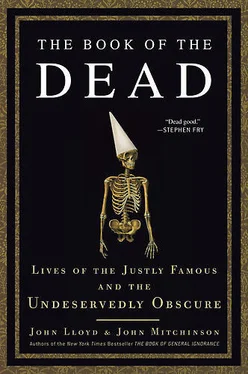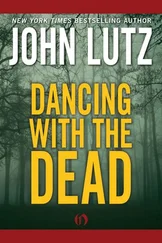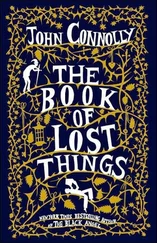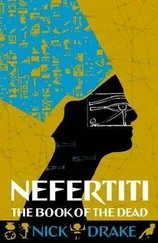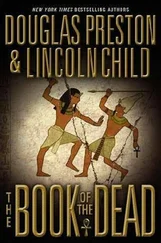What is truly admirable is Jenner’s attitude. He knew he was right; he never gave up; he didn’t try to profit from his discovery. He just took quiet pleasure in being the right man in the right place at the right time.
There was nothing quiet about Mary Seacole(1805–81), although she, too, was an exceptional healer. The Jamaican-born heroine of the Crimean War, forgotten for almost a hundred years, has recently been rediscovered and restored to her rightful place as one of great characters of the nineteenth century.
The daughter of a Scottish soldier and a Jamaican nurse, Mary Grant grew up in a boardinghouse for sick and disabled members of the armed forces, run by her mother in Kingston, Jamaica. As a teenager, she made her way to England on her own, paying her way with a suitcase full of exotic West Indian pickles. When she returned home to take over the running of the boardinghouse, she was able to combine her knowledge of traditional Caribbean healing with the latest Western medical ideas she had picked up in London. In 1836 she married Edwin Horatio Hamilton Seacole, an English merchant resident in the house, who was rumored to be the illegitimate son of Horatio Nelson and Lady Hamilton. But her happiness was tragically short-lived. In 1843 a fire wrecked the boardinghouse, and the following year Mary’s husband and mother both died. Grief-stricken and penniless, Mary left Jamaica for a second time to join her brother in Panama, where they jointly ran a hotel. It was there that she first got to practice her medical skills in earnest, nursing the victims of outbreaks of cholera and yellow fever—with remarkable results. Her method was based on careful observation of the symptoms of each individual patient: “Few constitutions permitted the use of exactly similar remedies, and… the course of treatment which saved one man, would, if persisted in, have very likely killed his brother.” Although some of her medications, like sugar of lead, probably did more harm than good, her attentiveness and general empathy with the suffering of those in her care offered a holistic approach to healing that was ahead of its time.
Encouraged by her success, she applied to the British War Office to serve as a nurse in the Crimea. Never one to under-dramatize her life, Mary wrote that she wanted to experience “the pomp, pride and circumstance of glorious war.” Needless to say, a loud and rumbustious fifty-year-old woman of mixed race and brightly colored attire was not what either Florence Nightingale or the War Office was looking for. Though laden with letters of recommendation, each of her several applications was rejected.
But Mary was undeterred. She had grown up surrounded by British soldiers and was convinced that her “sons,” as she called them, would need her special form of bedside care. So she borrowed some money, bought a one-way ticket, and printed some business cards:
Happy-go-lucky
BRITISH HOTEL
MRS. MARY SEACOLE
(Late of Kingston, Jamaica),
Respectfully announces to her former kind friends, and to the Officers of the Army and Navy generally,
That she has taken her passage in the screw-steamer Hollander , to start from London on the 25th of January, intending on her arrival at Balaclava to establish a mess table and comfortable quarters for sick and convalescent officers.
It was an astounding declaration, but she was as good as her word. In Balaclava, she bumped into an old business colleague of her husband’s, Thomas Day, and they set up a partnership. Using local laborers and any materials they could salvage—packing cases, driftwood, scrap metal—they built a small hotel. It opened in March 1855, on the main supply route to Sevastopol, two miles from the front line.
The British Hotel became a Crimean institution. The restaurant alone was legendary—Mary’s rice puddings and sponge cakes reminded the troops of home—but the hotel also served as a bar, a hospital, and a general store that stocked anything from “a needle to an anchor.” From there each day Mary would ride to the trenches surrounding Sevastopol, sometimes under fire, with two mules—one carrying medicine, the other food and wine—to nurse and feed the wounded. Known to all as “Mother Seacole,” she was a warm, reassuring presence amid the slaughter, dressed in startling combinations of yellow, blue, and red. She was on hand to care for the British after the ill-fated assault on the Redan outside Sevastopol in June 1855, in which a quarter of the men were killed or wounded. Two months later, after the battle at the Tchernaya River, she tended wounded Russians as well as French and Italians but was ready the next day to throw “a capital lunch on the ground” at a British regimental cricket match. In September, when Sevastopol finally fell to the allies, after a horrific yearlong siege in which a hundred thousand Russians died, Mary Seacole was the first woman to enter the burning city.
In 1856, the war over, Mary set off for England, penniless for the third time, ill, alone, and pursued by creditors. This would have been an unthinkable disaster for most women of her age, but she was unbowed: “I do not think I have ever known what it is to despair, or even to despond,” she wrote later. She took to wearing medals to remind people of her outstanding service to the military cause (although there is no record she was ever awarded any) and within a few months had mobilized her friends in the upper echelons of the army and the popular press to set up the Seacole Fund to save her from bankruptcy. It did that and more. In July 1857 the fund staged a four-day festival featuring more than a thousand performers, including eleven military bands. It was a kind of SeacoleAid, attended by a crowd of forty thousand people.
A month earlier, Mary had published her autobiography, the Wonderful Adventures of Mrs. Seacole in Many Lands. It was bound in bright yellow boards, with scarlet lettering and a portrait of Mary on the front in military garb, wearing a Creole kerchief and an extravagantly feathered hat. If that didn’t pull in the Victorian reader, the opening paragraph was a real lapel grasper:
All my life long I have followed the impulse which led me to be up and doing, and so far from resting idle anywhere, I have never wanted inclination to rove, nor will powerful enough to find a way to carry out my wishes.
With its vivid and moving account of the war, it became an immediate bestseller and cemented Mary’s celebrity status.
The last twenty-five years of Mary’s life were (by her somewhat frenzied standards) restrained and comfortable, and she died at her house in Paddington in 1881, aged seventy-six. Both the Times and the Manchester Guardian ran glowing obituaries. Her subsequent disappearance from the public record is usually blamed on the preeminence of Florence Nightingale, who, as we all know, invented modern nursing at her Crimean hospital in Scutari. This is unfair to both women. Mary Seacole was a doer, a force of nature. She restored people’s souls as well as their bodies. It’s appropriate that she has become a role model for the medical profession only now, after a century of more mechanistic medicine. But she invented no system, left no legacy. And she ran hotels, not hospitals—as Florence Nightingale was keen to point out. In 1870 the Lady with the Lamp wrote a rather vinegary letter to her brother-in-law complaining about Mary’s “bad character” and summing up her contribution to the war effort. “She was very kind to the men &, what is more, to the Officers—& did some good—& made many drunk.”
Florence Nightingale’s disdain raises another issue: Mary’s color. Was she the victim of prejudice? She certainly thought so. Reflecting on her rejection by the War Office, she wrote: “Did they shrink from accepting my aid because it flowed from a somewhat duskier skin than theirs?” In the 1970s, this became a rallying cry for disgruntled black nurses in the British National Health Service, marking the beginning of a process of rehabilitation for Mary Seacole that ended in her being voted the greatest Black Briton of all time and becoming a settled fixture in the national curriculum.
Читать дальше
